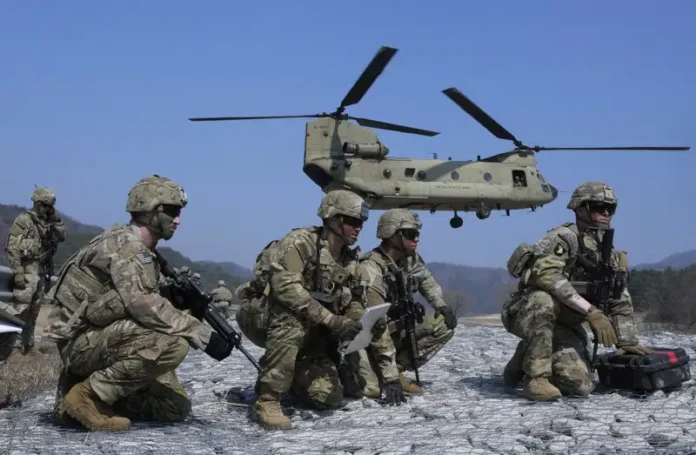SEOUL, South Korea (Reuters) – North Korea fired a short-range ballistic missile into the sea on Sunday, its neighbors said. Break-in rehearsal.
North Korea’s continued missile tests have signaled its resolve not to back down, despite the largest-ever military drills between the United States and South Korea. But many experts say the tests are also part of North Korea’s broader goals to expand its arsenal, gain global recognition as a nuclear state, and lift international sanctions. increase.
Estimates from South Korea and Japan say the missile, launched from North Korea’s northwestern Tongchan-ri region, flew over the country before landing in waters off the east coast. They said the missile traveled a distance of about 800 kilometers (500 miles), suggesting the weapon could target South Korea. Key nuclear envoys from South Korea, Japan and the United States discussed the launch over the phone and strongly condemned it as a provocation that threatened peace on the Korean peninsula and in the region. agreed to intensify coordination to provide a comprehensive response.
South Korea’s military said it would thoroughly pursue the remainder of its joint exercises with the United States and remain ready to respond “overwhelmingly” to any North Korean provocation. As part of the exercises, the United States flew long-range B-1B bombers for joint training with South Korean fighters on Sunday, according to South Korea’s defense ministry.
North Korea is very sensitive to the use of the B-1B, which can carry a huge amount of conventional weapons. In response to the B-1B flight in February, it launched a test missile demonstrating its potential range for hitting several air bases in South Korea.
Japan’s Senior Defense Minister Toshiro Ino said the missile landed outside Japan’s exclusive economic zone and there were no reports of damage to ships or aircraft. He said the missile likely exhibited an irregular trajectory, referring to North Korea’s highly maneuverable and nuclear-capable KN-23 missile modeled after Russia’s Iskandar missile. said it was possible.
The U.S. Indo-Pacific Command said the recent launches did not pose an immediate threat to U.S. territory or its allies. He said the US security commitments to South Korea and Japan remain “iron.”
The launch marked North Korea’s third weapons test since US and South Korean forces began joint military exercises last Monday. The training, which includes computer simulations and field exercises, is scheduled to continue through Thursday.
Among the weapons recently tested by North Korea is the longest-range Hwasong-17 ICBM designed to hit the continental United States. North Korean state media reported that Kim Jong-un said the launch of the intercontinental ballistic missile was to “instill fear in the enemy.”
South Korean media reports said the United States and South Korea are planning further exercises with a U.S. aircraft carrier later this month after the current exercise concludes.
Sunday, December 7, 2025
More
© London Post, All Rights Reserved by Independent Media Group UK Limited.






